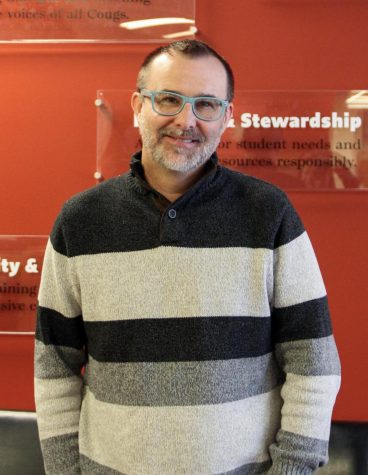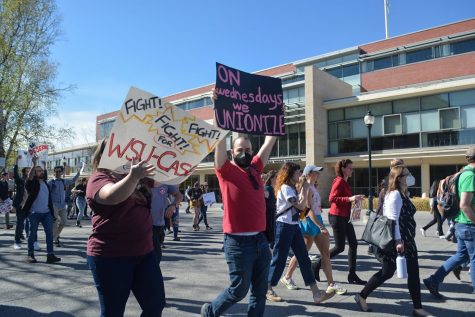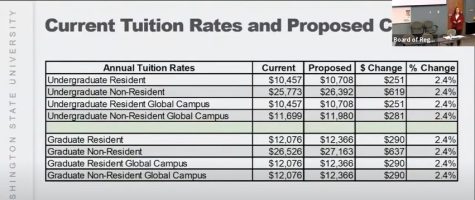University to focus on fiscal health, enrollment
University operating budget is $17 million more than the target
STEPHEN MURNANE | DAILY EVERGREEN FILE
WSU President Kirk Schulz says Pullman campus enrollment numbers have decreased for this school year. Enrollment numbers for all WSU campuses are up despite having fewer first generation students.
October 15, 2019
WSU President Kirk Schulz spoke about the accomplishments and fiscal health of the university during the thirteenth meeting of the Town Halls 2019 series on Monday.
Schulz said the university operating budget has about a $7.8 million surplus, which is $17 million more than the target for fiscal year 2019.
He said that WSU departments “rolled up their sleeves” to make this happen by reducing department spending.
Despite the overall budget surplus, he said the Athletics department is still projected to spend $7.1 million more than it makes in 2019.
Through the livestream, one person asked if academic departments have to pay more or are affected because Athletics is operating at a deficit while other departments are not.
Schulz said the deficit does not affect a college’s ability to hire but it does mean that the university must keep money in reserves to cover it. This affects Housing and Dining more than any other part of the university.
Athletics is not spending money from Housing and Dining but money that could be used for residence hall renovations must instead be kept in reserve, he said. Although Athletics is not taking money from other departments, its program deficit does stop other departments from spending their money.
Washington State law requires that the budget must be balanced, according to the Washington State Legislature. For a budget to be considered balanced, there must be enough total money and property value to equal or exceed the total debt of an institution.
Schulz said WSU enrollment across the system was 31,607 students, which is more than any year in the school’s history.
Overall enrollment increased but first-generation enrollment has steadily decreased over the last five years, he said.
Schulz said Pullman campus enrollment decreased this year because people had concerns about housing and class sizes. He said it is clear Pullman is not ready for an incoming class of 4,500 students.
He said the goal this year was to have fewer incoming students on the Pullman campus.
Adē Snider, academic and internship coordinator in the department of horticulture, asked Schulz if the university is planning to continue admitting fewer students to Pullman or making improvements to support higher enrollment rates.
“With increased enrollment, we have more students but we don’t have anywhere to put them,” Snider said.
She said that most horticulture, enology and viticulture classes must be available through video conference because the programs are co-located on different campuses.
Schulz said managing enrollment is going to be a big project this year and taking care of the costs to build a diverse student body is a priority. He said the university has to manage the money from enrollment and invest in salaries and infrastructure to prepare for more students.
Schulz said the College of Agricultural, Human and Natural Resource Sciences receives more money from the United States Department of Agriculture for research than any of the other 375 U.S. universities that get funding from the department.
The college is also a top 25 university for precision agriculture programs in the world, he said. The school raised about $35 million in private gifts that includes the first family-endowed deanship for the college.






















